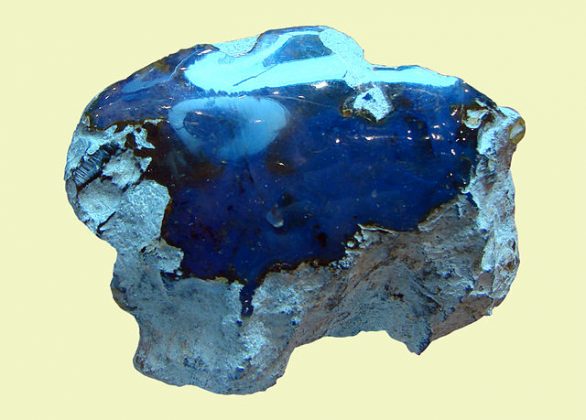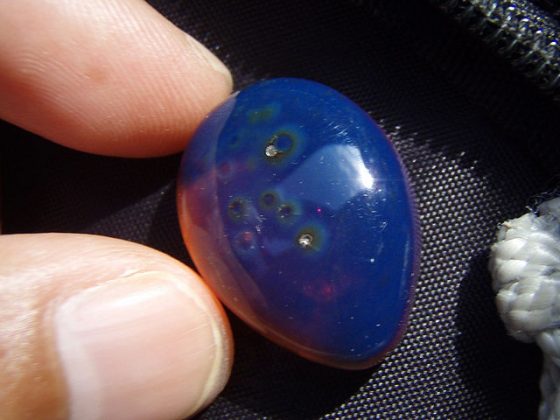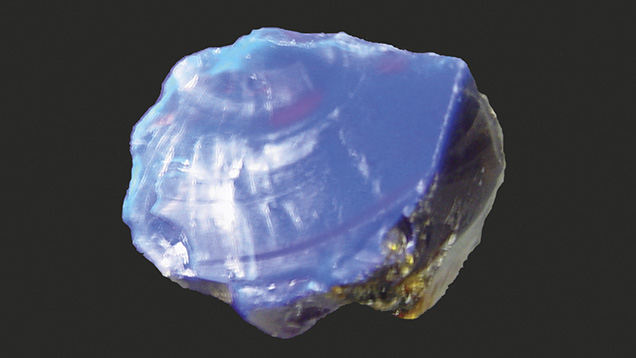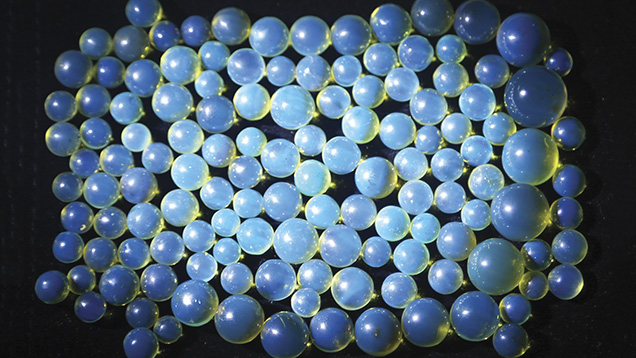
Amber is fossilized tree resin used for jewelry, decoration, medicine, and perfume. Specimens with inclusions of insects and plants are of great scientific significance and highly esteemed by collectors. Amber is usually yellow to brown, and some specimens display red to brownish red or reddish brown colors. Blue amber is rare, found mainly in the Dominican Republic with some production from Indonesia and Mexico. This variety comes from the resin of the extinct tree species Hymenaea protera (Iturralde-Vinent and MacPhee, 1996; Poinar and Poinar, 1999). According to Iturralde-Vinent and MacPhee (1996), most Dominican amber occurs in two zones: north of Santiago de los Caballeros (the “northern area”) and northeast of Santo Domingo (the “eastern area”).
Although resinites of different ages exist, available biostratigraphic and paleogeographic data suggest that the main amber deposits in the Dominican Republic (including those famous for yielding biological inclusions) were formed in a single sedimentary basin during the late Early Miocene through early Middle Miocene (15 to 20 million years ago). There is little evidence of extensive reworking or redeposition of the ambers. Before the studies of Iturralde-Vinent and MacPhee (1996), amber from the northern area was thought to have formed during the Early Eocene to Early Miocene epochs (Baroni-Urbani and Saunders, 1982; Lambert et al., 1985; Poinar and Cannatella, 1987; Grimaldi, 1996), while published estimates for the eastern area ranged from the Cretaceous to Holocene epochs (Burleigh and Whalley, 1983; Poinar and Cannatella, 1987; Grimaldi, 1996).
Blue amber
Blue amber is amber exhibiting a rare coloration. It is most commonly found in the amber mines in the mountain ranges around Santiago, Dominican Republic, but also in the eastern parts of the Dominican Republic. Although little known due to its rarity, it has been around since the discovery of Dominican amber.
Causes of coloration
When natural light strikes blue amber on a white surface, the light passes right through, and is refracted by the white surface. The result is the slight blue hue of blue amber. When the same natural light strikes the amber on a black surface, the light is not refracted by the black surface, but by the actual amber. Hydrocarbons in the blue amber shift the sun’s ultraviolet light down in frequency, resulting in the glow of blue amber.
This effect is only possible in some specimens of Dominican amber category, in some Mexican ambers from Chiapas and some ambers from Indonesia. Any other amber (such as Baltic amber) will not display this phenomenon, because its original resin is not from the Hymenaea protera tree.
The polycyclic aromatic hydrocarbons, produced through a pyrolytic process that is initiated via irradiation, relax to their ground state, absorb high-energy ultraviolet photons and re-emit them as lower-energy visible photons, according to the absorbance curve of the particular fluorophore.
Recently, optical absorption, fluorescence and time-resolved fluorescence measurements in Dominican ambers have been reported. These studies show that the “blue” variety reveals an intense fluorescence emission in the visible wavelength region, between 430 and 530 nm, with spectral features typical of aromatic hydrocarbons. On the contrary, the Dominican “red” and “yellow” amber varieties have a much weaker and featureless emission, although still do have a certain fluorescence. The process in blue amber is surprisingly similar to phosphor.
Although there are several theories about the origin of Dominican blue amber, there is a great probability that it owes its existence to ingredients such as anthracene as a result of ‘incomplete combustion’ due to forest fires among the extinct species Hymenaea protera trees about 25 to 40 million years ago.
Vittorio Bellani and Enrico Giulotto at the University of Pavia, Italy studied several amber specimens by means of optical absorption, fluorescence spectroscopy, and time-resolved fluorescence measurements. The resulting spectral analysis revealed that the spectra of the hydrocarbons are very similar in shape to those of diluted solutions of anthracene, perylene, and tetracene, and suggest that the fluorescent hydrocarbon responsible for the blueness is most likely perylene.
Appearance
Under artificial light, the amber appears like ordinary amber, but under sunlight it has an intense fluorescent blue glow. When held against the sun it will appear like ordinary amber, and under ultraviolet light it will glow a bright milky-blue. This effect can be compared to the ocean, which, although transparent, can appear anything from light blue to dark blue to black, depending on depth, mass, salinity, etc.
Blue amber emits a very agreeable smell (aromatic molecules), which is different from regular amber when it is being cut and polished.
Photo
Reference:
Gemological Institute of America Inc: Color Phenomena of Blue Amber
Wikipedia: Blue amber














